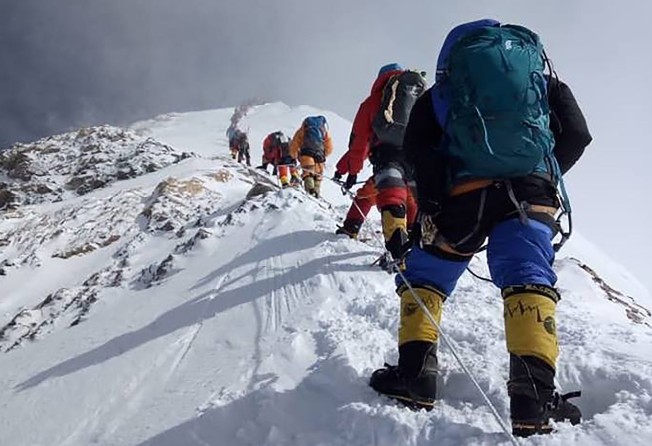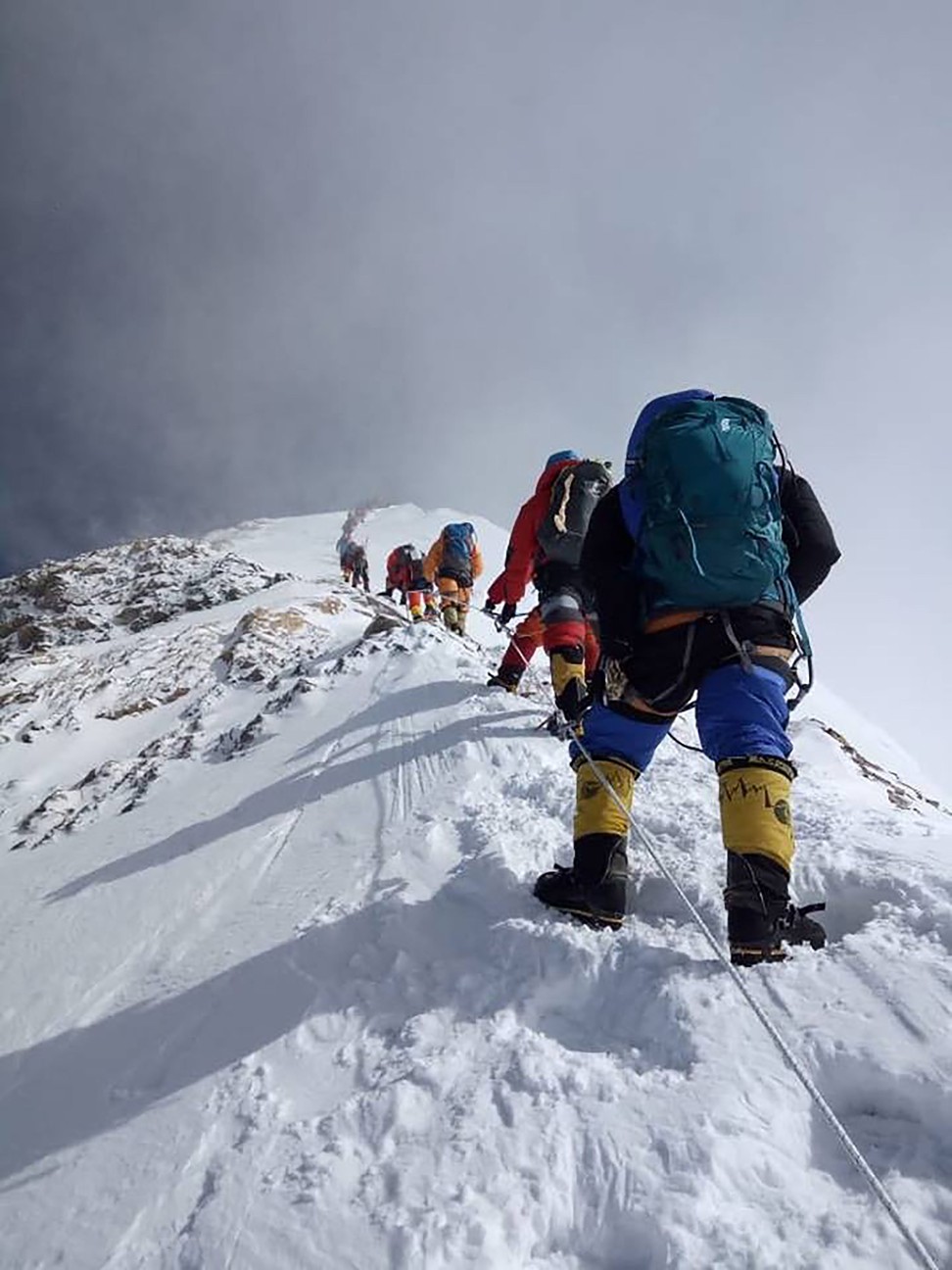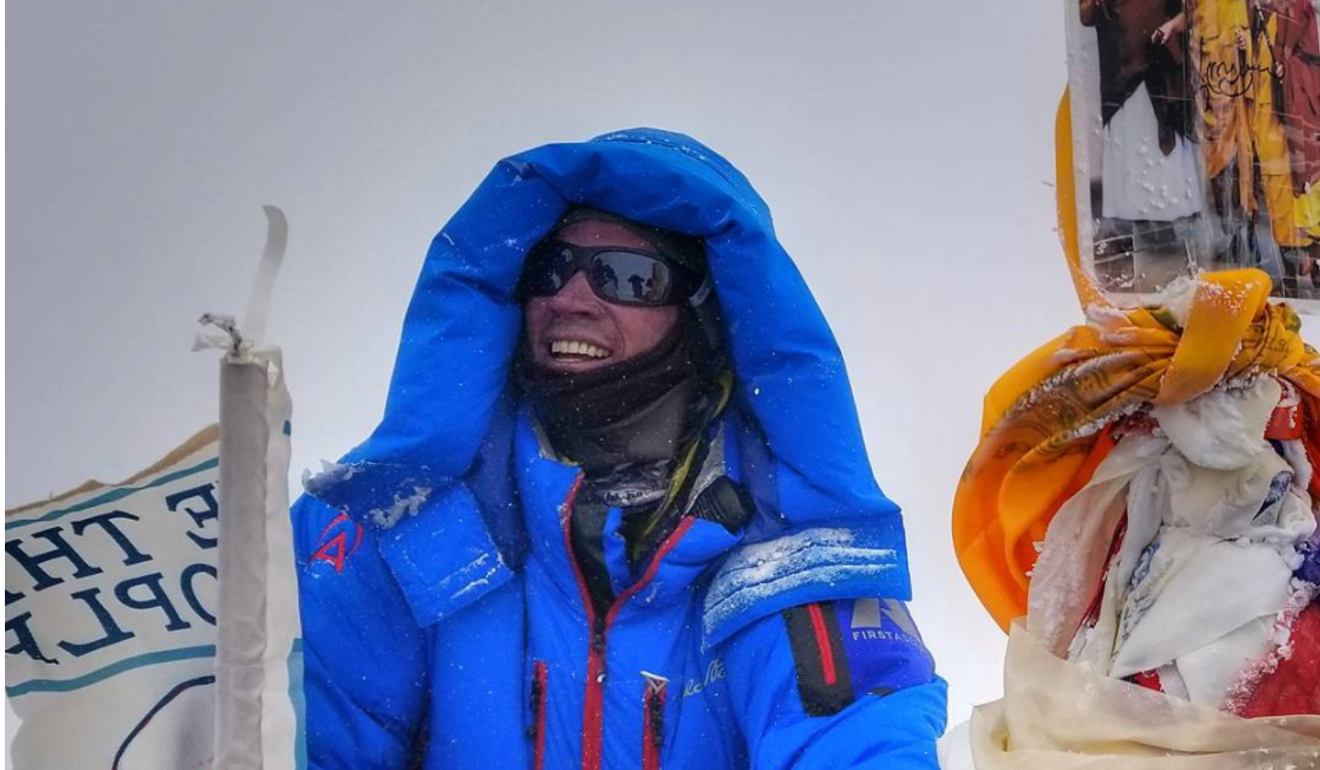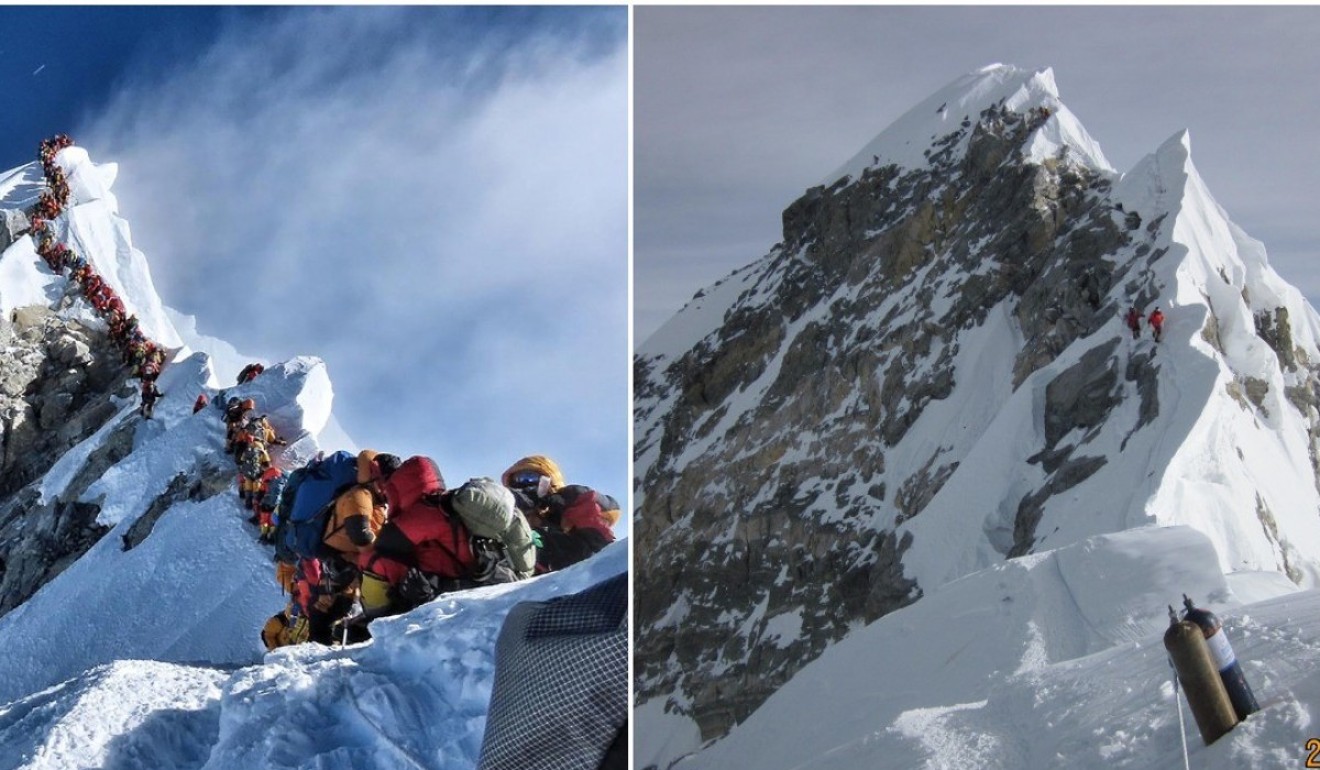Nepal refuses to restrict Everest permits despite traffic jams and 11 deaths
- Ministry of Tourism and Civil Aviation secretary says they will have two ropes near the summit, so climbers can ascend and descend separately
- He blames short weather window, equipment and inadequate supplemental oxygen for high death toll

Scaling Mount Everest was a dream few realised before Nepal opened its side of the mountain to commercial climbing. This year the government issued a record number of permits, contributing to traffic jams on the world’s highest peak that may have caused the greatest death toll in four years.
But after 11 people died this year, Nepal tourism officials have no intention of restricting the number of permits issued, instead encouraging even more tourists and climbers to come “for both pleasure and fame”, said Mohan Krishna Sapkota, secretary at the Ministry of Tourism and Civil Aviation.
As the allure of Everest grows, so have the crowds, with inexperienced climbers faltering on the narrow passageway to the peak and causing deadly delays, veteran climbers said.
Nepal, one of the world’s poorest countries, relies on the climbing industry to bring in US$300 million each year. It doesn’t cap the number of permits it issues or control the pace or timing of the expeditions, leaving that to tour operators and guides who take advantage of brief clear weather whenever they come, leading to pileups near the peak.
On May 22, a climber snapped a photo from a line with dozens of hikers in colourful winter gear that snaked into the sky.
Climbers were crammed crampon-to-crampon along a sharp-edged ridge above South Col, with a 2,000-metre drop on either side, all clipped onto a single line of rope, trudging toward the top of the world and risking death as each minute ticked by.

“There were more people on Everest than there should be,” said Kul Bahadur Gurung, general secretary of the Nepal Mountaineering Association, an umbrella group of all expedition operators in Nepal. “We lack the rules and regulations that say how many people can actually go up and when.”
Once only accessible to well-heeled elite mountaineers, Nepal’s booming climbing market has driven down the cost of an expedition, opening Everest up to hobbyists and adventure-seekers. Nepal requires climbers to have a doctors’ note deeming them physically fit, but not to prove their stamina at such extreme heights.

Because of the altitude, climbers have just hours to reach the top before they are at risk of a pulmonary oedema, when the lungs fill with liquid. From Camp Four at 8,000 metres to the 8,850m peak, the final push on Everest is known as the “death zone”.
“Every minute counts there,” said Eric Murphy, a mountain guide from Bellingham, Washington, who climbed Everest for a third time on May 23.
He said what should have taken 12 hours took 17 hours because of struggling climbers who were clearly exhausted but had no one to guide or help them.

Just a handful of inexperienced climbers, he said, is “enough to have a profound effect”.
Nepal doesn’t have any regulations to determine how many permits should be issued, so anyone with a doctor’s note can obtain one for an US$11,000 fee, Sapkota said.
This year, permits were issued to 381 people in 44 teams, the highest number ever, according to the government. They were accompanied by an equal number of Sherpas.
Some climbers were originally issued permits in 2014 that were revoked midseason when 16 Sherpa guides died in an avalanche and other Sherpas, whose support as guides and porters is essential, effectively went on strike.
Another factor was China’s limit on the number of permits it issued this year for routes in its territory on the north side of Everest for a clean-up.
Both the north and south sides of the mountain are littered with empty oxygen canisters, food packaging and other debris.

Instead of the overcrowding, Sapkota blamed the weather, equipment and inadequate supplemental oxygen for this year’s deaths.
“There has been concern about the number of climbers on Mount Everest but it is not because of the traffic jam that there were casualties,” Sapkota said in Namche, the town that serves as the staging area for Everest trips.
Still, he said, “in the next season we will work to have double rope in the area below the summit so there is better management of the flow of climbers.”
Mirza Ali, a Pakistani mountaineer and tour company owner who reached Everest’s peak for the first time this month, on his fourth attempt, said such an approach was flawed.
“Everybody wants to stand on top of the world” but tourists unprepared for the extremes of Everest endanger the entire industry, he said.
“There is not a sufficient check on issuing the permits,” Ali said. “The more people come, the more permits, more business. But on the other side it is a lot of risk because it is costing lives.”
Indian climber Ameesha Chauhan, soaking her frostbitten toes in medicine at a hospital in Kathmandu, described the agony of turning away from the peak when she realised her supplemental oxygen supply was low.
Two of her team members died on the May 16 ascent. She returned and scaled the peak a week later.
“If you look at it, the inexperienced climbers do not even know how to tie on the oxygen masks around their face,” she said. “Many climbers are too focused on reaching the summit.”